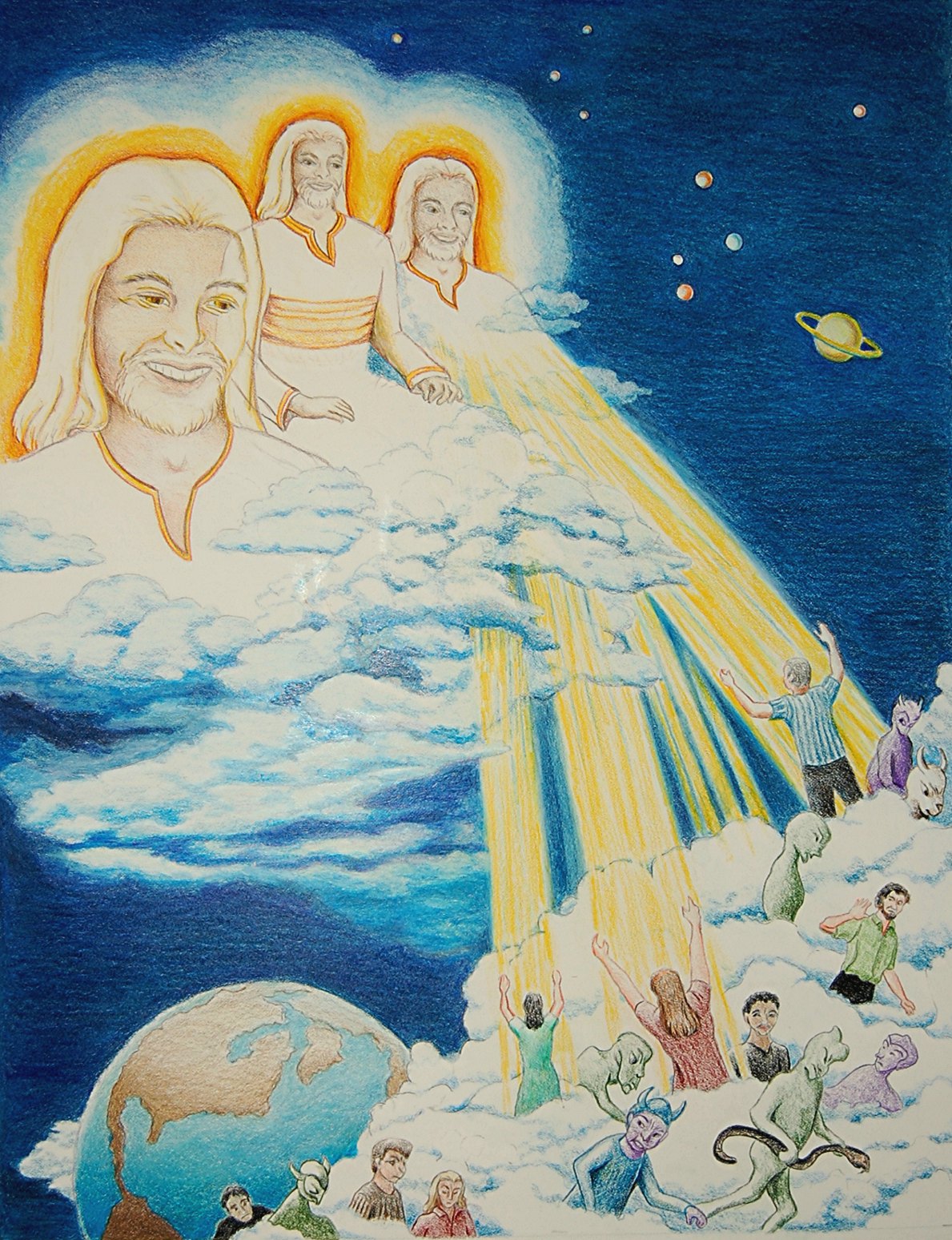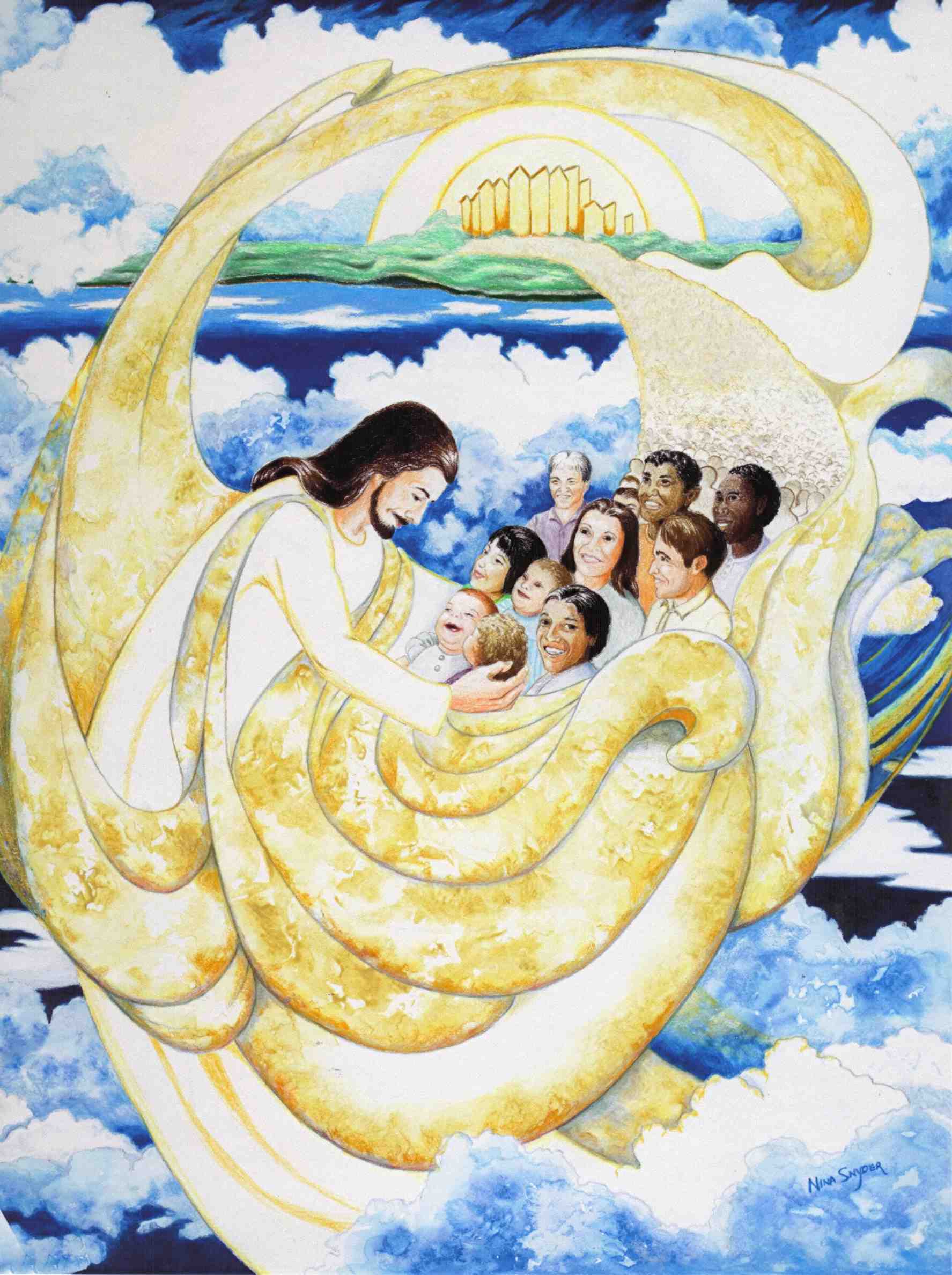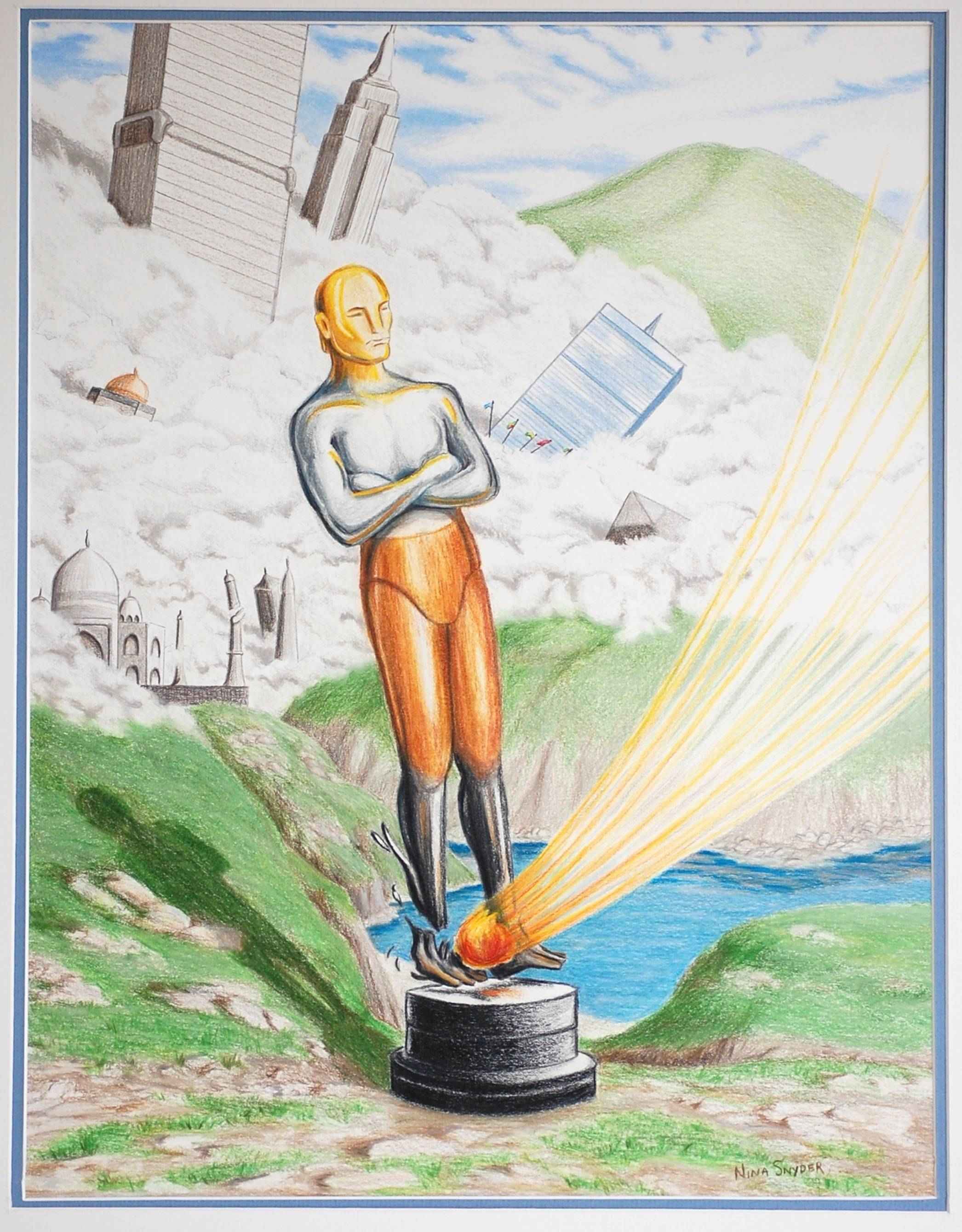Why do the nations rage, and the people plot a vain thing?
The kings of the earth set themselves, and the rulers take counsel together,
Against the LORD and against His Anointed, saying,
“Let us break their bonds in pieces and cast away their cords from us.”
He who sits in the heavens shall laugh; The LORD shall hold them in derision.
Then He shall speak to them in His wrath, and distress them in His deep displeasure:
“Yet I have set My King on My holy hill of Zion.”
“I will declare the decree: The LORD has said to Me,
‘You are My Son; today I have begotten You.
“Ask of Me, and I will give You the nations for Your inheritance, and the ends of the earth for Your possession.
“You shall break them with a rod of iron; You shall dash them to pieces like a potter’s vessel.’”
Now therefore, be wise, O kings; be instructed, you judges of the earth.
Serve the LORD with fear and rejoice with trembling.
Kiss the Son, lest He be angry, and you perish in the way, when His wrath is kindled but a little. Blessed are all those who put their trust in Him.
HOW PSALM 2 DEPICTS THE TRINITY
In the beginning God said, “Let Us make man in Our image, according to Our likeness…” (Gen. 1:26), clearly indicating His plurality. Although there is a singular Hebrew word for “God”, the word most frequently used throughout the Old Testament, “Elohim”, is not singular but plural. In order for all the persons of the Godhead to be truly God, they must be equally of the same intrinsic, fundamental nature. Jesus, however, spoke to and about His Father as if the Father were not only separate from Himself but also higher.
The Lord’s prayer (Matt. 6:9-13) is a model of the penitent sinner’s asking the Father (not the Son or the Holy Spirit) to forgive him. Consequently, some believe it is wrong to ask Jesus or the Holy Spirit to forgive us for our sins. We could understand these scriptures and many others if we could grasp the inter-relationship of the Godhead and how each person of the Trinity relates to us. Of the many questions Christians have as they read scriptures pertaining to the nature of God, we will consider ten of the most puzzling.
1. If there is only one true God (Deu. 6:4), how can Jesus be said both to be God and to be with God? (John 1:1-3)
2. If Jesus is God, and if there is only one God, how can there be one greater (John 14:28) and more knowledgeable than Jesus (Matt. 24:36), who has sent Jesus on a mission (John 17:45), and Jesus still be that omnipotent God?
Revelation 13:8 identifies Jesus as, “the Lamb slain from the foundation of the world.” Considering man’s creation from the perspective of eternity rather than from the realm of time, we may conclude the Adam of Genesis was patterned after Christ, the last Adam (1 Cor. 15:45), and not vice versa.
Even though man is not an exact replica of God, it is accurate to say God created man similar to Himself (as it says in Gen. 1:26). We are unable to conduct a physical examination of God, but since man is made in God’s image and likeness, it is likely that examining man will provide us with some clues. Some might fear this approach would be exchanging “the glory of the incorruptible God for an image in the form of corruptible man” (Rom. 1:23). Paul, however, holds that God’s “invisible attributes, His eternal power and divine nature have been clearly seen, being understood through what has been made.” (Rom 1:20)
Unger’s Bible Dictionary states the resemblance between God and man is in the areas of spirituality, personality, holiness, love, and dominion. These concern character and authority, but in order to answer our questions, we must know something about God’s internal functions and operations. Ephesians 4:4-6 speaks of one body, one Spirit, one Lord, and one God. Verse 12 identifies that one body as the Body of Christ and verse 15 recognizes Christ as its head. It is this man who we will examine.
In 1 Cor. 12:14-18, Paul identifies the ear, eye, and nose as parts of the body, not as parts of the head. The control center of these and all other parts of the body is the brain. This point is essential in determining how Christ functions in relation to His body and in seeing a definitive comparison between the supernatural and the natural.
The triune head of man
The human brain can be roughly divided into three major sections: (A.) the left hemisphere, (B.) the right hemisphere, and underneath these, (C.) the lower portion of the brain which includes the cerebellum. Each hemisphere has specific, though often overlapping, functions and capabilities. Together with the lower brain, they initiate, coordinate and regulate all of the movements, processes, and operations of the body.
The left hemisphere, dominant in the vast majority of individuals, controls the right side of the body which is why most people are right-handed. It specializes in spoken and written language, abstract and rational thinking, analysis, mathematics, and logic. Keep in mind that the term “dominant” refers to that hemisphere’s relationship with the body in regard to handedness and does not imply dominance over the other hemisphere.
The right hemisphere, usually the non-dominant, controls the left side of the body. It specializes in spatial perception (perceiving and understanding objects relative to each other in space); is non-temporal and intuitive; and has instantaneous, global insight (spontaneous grasp of the whole picture).
Some authorities believe it is specialized in synthesis (the putting together of parts to form a whole) and analogous relationships (seeing similarities in some respects between things otherwise unlike). Although speech is mostly an operation of the left hemisphere, certain elements of speech, such as using and understanding tonal innuendoes, seem to be processed by the right hemisphere.
Whatever the actual contribution of each hemisphere, they do work in cooperative harmony. In a normal, healthy individual, both cerebral hemispheres collaborate in processing incoming and out-going data through electrochemical impulses which travel across the corpus callosum, a thick bundle of 200 million nerve fibers, which connects the two hemispheres.

Sperry’s split-brain studies
During the 1950’s, this vital link between the two hemispheres was severed surgically in a number of severely afflicted epileptic patients to prevent the transmission of epileptic activity from one side of the brain to the other. Some of these patients had been suffering numerous seizures with little relief.
Until R.W. Sperry, R.E. Myers, and Michael Gazzaniga began the split-brain studies of these patients, most people had assumed their mind was a unitary system, not a pair of mental twins which inhabit the same body. A person usually refers to himself as “I,” not “we.”
Sperry and the others developed ways of presenting both visual and auditory stimuli to only one of the hemispheres by means of a special device and discovered one hemisphere could receive information apart from the other. Consequently, one side of a person’s brain could know what the other hemisphere did not, with the one responding to various stimuli, much to the other’s surprise.
Jesus and the Father are equally God
How does this relate to the Godhead? My brain resembles God in the same way my two cerebral hemispheres are both “me” and at the same time are “we,” as was demonstrated in the split-brain patients. Although Jesus existed in the form of God (Phil. 2:6), when He came to earth as a baby. He “emptied himself, taking the form of a bond-servant being made in the likeness of men.” (Phil. 2:7)
Jesus’ emptying of Himself was like severing the corpus callosum which had previously connected an epilepsy patient’s two hemispheres together. The Father (illustrated by the dominant hemisphere) sent Jesus on a mission that used His specialties (remember how Jesus taught with perfect parables). Now that the Son had emptied Himself (severed from the Father), the Father could know what the Son didn’t know. Then, when Jesus ascended back to the Father, His former position and condition were restored, just as Col. 2:9 tells us, “in Him, all the fullness of Deity dwells in bodily form.” There Jesus sits at the right hand of the Father (Mark 16:19), as one hemisphere sits to the right of the other hemisphere.
The Holy Spirit’s Role
3. How can the Holy Spirit be equally God with the Father and the Son if He only speaks what He hears the Father saying (John 16:13)?
Beneath the cerebral hemispheres is the third portion of the brain, comprised of several highly specialized parts. The largest of these parts is the cerebellum or “little brain.” Although it doesn’t initiate motor activity, it co-operatively plays a crucial role in voluntary muscle movements, including the mechanics of speech, eye-hand coordination, posture, and fine motor skills.
The cerebellum adjusts the force and range of the body’s movement. More than being merely a communication center between the 2 cerebral hemispheres and the body, the cerebellum operates in a synergistic way with the two cerebral hemispheres. That is, working together, they have a greater total effect than the sum of their individual actions.
The cerebellum receives information from the two cerebral hemispheres about actions which are planned. While movement is in progress, the cerebellum continually receives information about motor performance, comparing commands for activity with the actual movements themselves. It is then able to correct and modify subsequent movements.
No matter how comprehensive the concept, or how well the strategy planned, no work of art, no symphonic phrase, no graceful arabesque in ballet could ever be performed without the cerebellum.
In this way, the Holy Spirit is like the cerebellum. His activity flows out of his communication with the other two members of the Godhead. It was through the work of the Holy Spirit the heavens were garnished (Job 26:13), all the animals on earth were created (Ps. 104:24-30), and life was breathed into man (Job 33:4).
From its connection with both cerebral hemispheres and with the brain stem at the top of the spinal cord, the cerebellum directs the movements of the body.
In like manner, the Holy Spirit communicates His corrections and affirmations, as well as the purposes and insights from Father and Son, to the Body of Christ in order to influence its life.
In the fullest sense of his functioning within the Body of Christ, the Holy Spirit is probably more completely typified by the entire lower brain, which includes the involuntary functions of glands, organs, etc., rather than the cerebellum alone. For the purposes of this study, though, we have confined our analogy within the limits of answering our three questions.
For a full discussion of this subject, read my booklet, Made in His Image and Likeness – 10 Most Frequent Questions about the Trinity.




